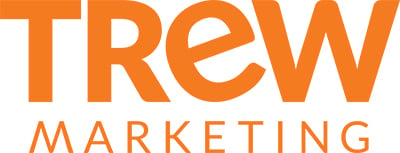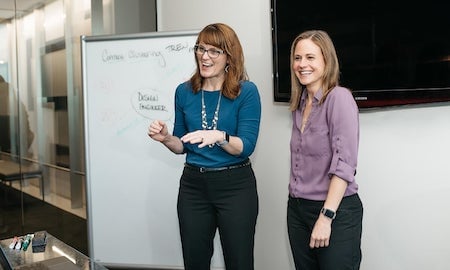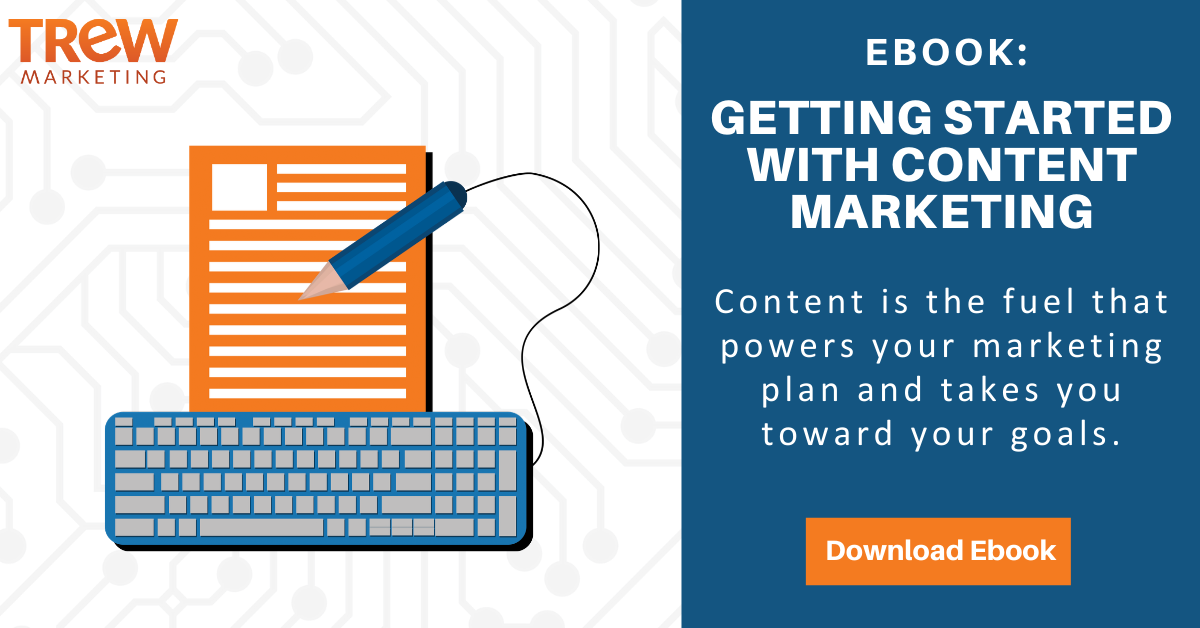4 min read
Content Types that Guide Engineers Throughout Their Buyer's Journey
 Jennifer Dawkins
:
3/30/22 10:51 AM
Jennifer Dawkins
:
3/30/22 10:51 AM
Engineers are savvy buyers, investing significant time to research multiple companies and solutions ahead of making a purchasing decision. With a significant portion of the buyer's journey taking place online and independently, it is crucial to approach content development strategically, ensuring that potential buyers have access to the right content at every stage of their buyer journey.
First, Consider Your Target Audience's Content Needs
Before you develop content, invest time as an organization to create a content plan. To efficiently and effectively create your plan, form a small committee of internal stakeholders that includes a representative from your sales team who works closely with customers. In your initial strategy session, analyze your existing content, identify gaps and new content needs, and set objectives, metrics, and a timeline so you can hold your team accountable. From there, schedule time to regroup and begin brainstorming content topics using a structured, topic cluster framework that includes: identifying content themes, topics, and subtopics.
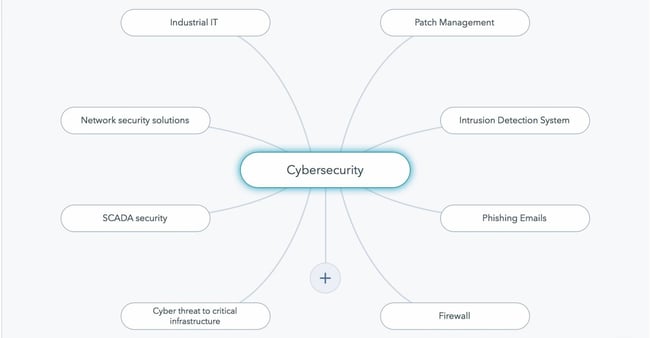
To Build Out subtopics, consider the following:
- What tough questions do your customers consistently ask your sales and support staff?
- What are the top three to four trends relevant to your products or services?
- What are the common challenges you see customers face that you could explain to help others avoid, evaluate, or work through?
- What are the business risks associated with the application areas you work in and what can you share about how to mitigate these?
- What real-world examples can you share to illustrate your expertise?
The next part of the content planning process is to consider the engineer's buyer journey and identify content types to help you engage them throughout each phase of their process.
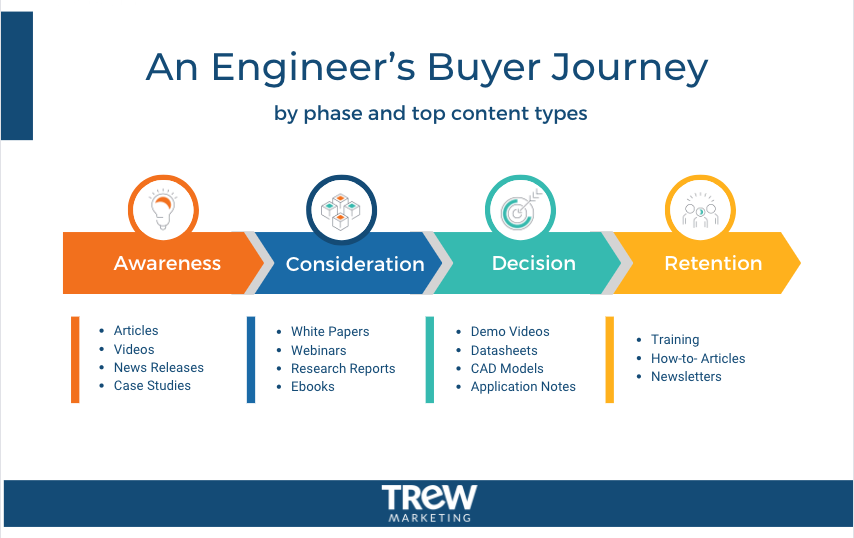
While there are many different content types in a buyer's journey, these are the top types that engineers prefer according to The State of Marketing to Engineers Research Report.
Attract Prospects in the Awareness Phase
Prospects in the awareness phase will likely find your website through a search engine result based on a problem statement or pain point they are experiencing. Content in this phase should focus on your unique value proposition, the products and/or services you offer, and how you can solve your prospects' pain points.
Top Content Types in the Awareness Phase:
- Articles
- Videos
- News Releases
- Case Studies
Convert Prospects in The Consideration Phase
As engineers continue to evaluate options, provide them with comprehensive and detailed content that showcases your expertise and highlights how your products or services can effectively address the challenges they are facing. By offering this next level of in-depth content, you significantly increase the likelihood of converting them into a lead.
The key is to create content that is insightful, relevant, and valuable. By doing so, you will not only attract their attention but also establish yourself as a go-to resource for their needs and they may even refer to you to a colleague or contacts in their industry ecosystem.
Top Content Types in the Consideration Phase:
- White Papers
- Webinars
- Research Reports
- Ebooks
Close prospects In The Decision Phase
As a prospect enters the decision phase, they have already gone through a rigorous process of evaluating different solution strategies, methods, or approaches. They have carefully considered their options and are now ready to take the next step towards making a final purchase decision. At this stage, their goal is to compile a list of potential vendors who can meet their specific needs and requirements.
To compile this list, prospects will gather feedback from their team members and colleagues, seeking input and insights from those who will be directly impacted by the purchase decision. They will also conduct thorough research on each vendor, comparing their offerings, pricing, and reputation in the market.
By offering detailed product demonstrations through demo videos, prospects can get a firsthand look at how specific solution works and evaluate functionality and features. Datasheets provide comprehensive information about your product's specifications, features, and performance, helping prospects make informed comparisons. CAD models allow prospects to visualize and explore the product in a virtual environment, giving them a better understanding of its design and potential applications. Application notes provide real-world examples and case studies that demonstrate how the vendor's solution has successfully addressed similar challenges faced by other customers.
With these content types available during the decision phase, prospects can confidently narrow down their options and make a final purchase decision. By providing comprehensive and informative content, companies can establish trust and credibility, positioning themselves as the preferred choice among their competitors.
Top Content Types in the Decision Phase:
- Demo Videos
- Datasheets
- CAD Models
- Application Notes
Support & Delight Customers in the Retention Phase
It’s important to remember that your content plan extends beyond the sale. The content for the retention phase focuses on supporting and delighting your customers in a way that will keep them interested in what your company has to say and can help turn customers into advocates, expanding your brand reach and attracting new prospects..
One way to support your customers in the retention phase is by providing getting started tips and tricks. This type of content can help new customers navigate your products or services more effectively, ensuring they are able to quickly and efficiently begin using them to their full potential. By offering step-by-step guides, tutorials, and best practices, you empower your customers to make the most out of their investment.
Training materials are another valuable content type in the retention phase. By providing ongoing training resources, you enable your customers to continuously improve their skills and knowledge. This can include video tutorials, webinars, and interactive courses that cover advanced topics or specific use cases. By investing in your customers' professional development, you not only help them succeed but also position yourself as a trusted partner in their growth.
Industry trend information is also highly valued by customers in the retention phase. By staying up-to-date on the latest trends and developments in their industry, customers can stay ahead of the competition and make informed decisions. This can include industry reports, research papers, and case studies that highlight emerging technologies, market insights, new research, and best practices. By providing this type of content, you position yourself as a thought leader and resource for industry knowledge.
Top Content Types in the Retention Phase:
- Training
- How-To-Articles and Videos
- Newsletters
The relational manner of the connections within your content plan creates a cohesive and valuable resource that guides engineering prospects throughout their buyer journey, ultimately helping your company attract new prospects, close new business, and educate existing customers.
Learn more about creating relevant, compelling, and easy-to-find content that will help your company attract new prospects, close new business, and educate existing customers.
TREW is a marketing agency dedicated to reaching engineering and technical audiences through a range of marketing initiatives. Contact us today to learn more about the services we offer.
SUBSCRIBE TO OUR BLOG FOR THE LATEST UPDATES
Jennifer Dawkins
 Jennifer has been successfully marketing to engineers and scientists for nearly 20 years. Her marketing experience spans from defining company narratives and developing integrated marketing campaigns to building mutually beneficial partner relationships and maximizing performance in cross-functional teams. Jennifer holds a Bachelor of Journalism degree from the University of Texas at Austin. She is a native Austinite and when not at work, enjoys being on the lake or cheering on her sons’ soccer teams.
Jennifer has been successfully marketing to engineers and scientists for nearly 20 years. Her marketing experience spans from defining company narratives and developing integrated marketing campaigns to building mutually beneficial partner relationships and maximizing performance in cross-functional teams. Jennifer holds a Bachelor of Journalism degree from the University of Texas at Austin. She is a native Austinite and when not at work, enjoys being on the lake or cheering on her sons’ soccer teams.
About TREW Marketing
TREW Marketing is a strategy-first content marketing agency serving B2B companies that target highly technical buyers. With deep experience in the design, embedded, measurement and automation, and software industries, TREW Marketing provides branding, marketing strategy, content development, and digital marketing services to help customers efficiently and effectively achieve business goals.
